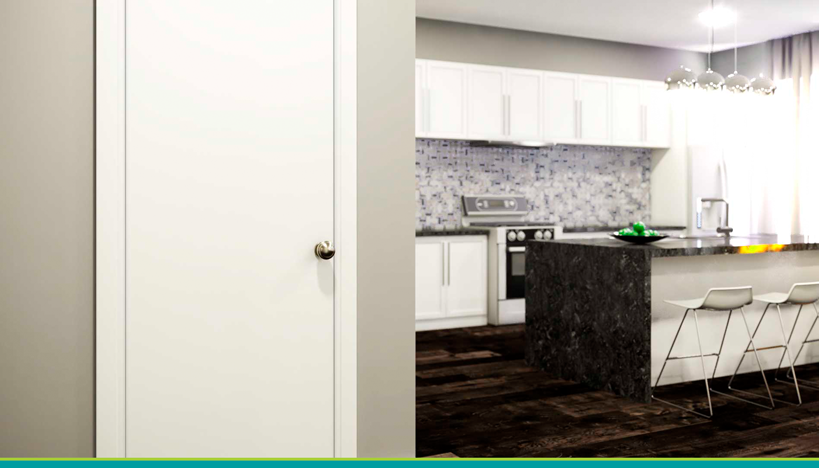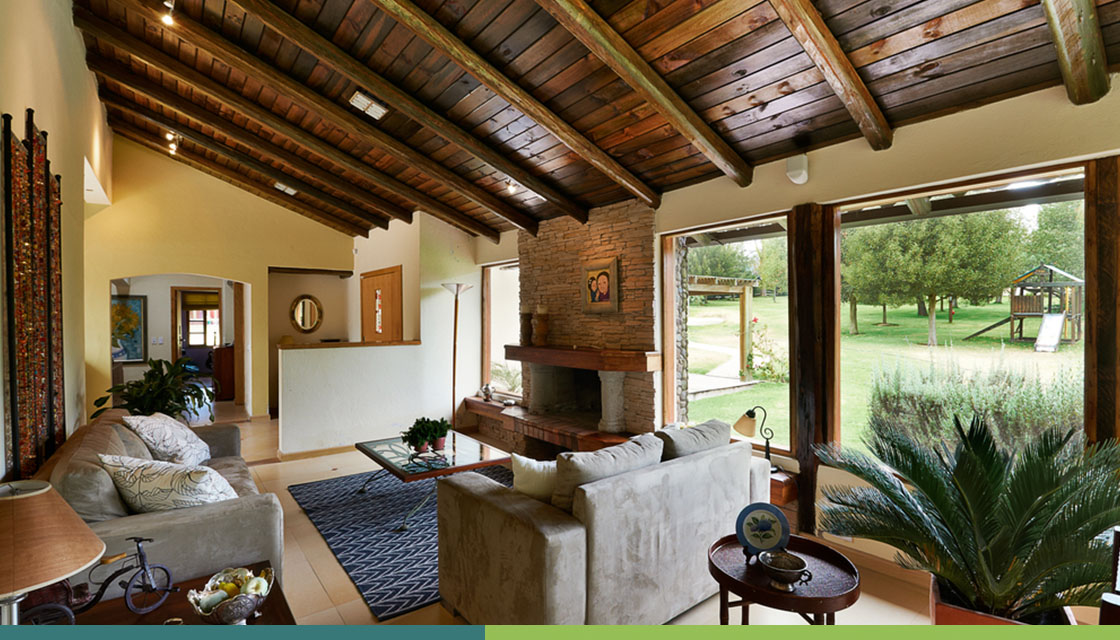Composite doors and wooden doors might look similar on the outside and both come in a variety of styles and sizes; but are vastly different when it comes to durability, design, quality, ease of maintenance and cost.
When two products look so similar on the surface, it can be difficult to choose which product will best suit you. In this article, we will explore the major differences between composite and wooden doors to help you select the right product.
Wooden Doors
There are three main types of wooden doors; Solid Wood, Solid Core and Hollow Core. Check out our blog for more information on choosing the right wooden door for your project. Wood is the classic choice when it comes to selecting beautiful, reliable doors for your home.
Wooden doors are the highest quality door on the market. When treated correctly, wooden doors can last for more than 100 years and look beautiful all the while. They do need occasional maintenance, but if you are willing to put in the work, you will be rewarded with a timeless door.
Wood doors are also highly customizable, they can be as plain or fancy as you desire. One of the benefits of having to occasionally re-paint or prime is that you can easily change the color of your door every couple of years.
You don’t need to be a DIY master when it comes to changing hardware like handles and hinges, which allows you to change colors and styles on a whim.
In addition to being aesthetically pleasing, wooden doors provide excellent acoustic and thermal insulation while also providing home security.
Plus, exterior doors made of solid wood make such a bold statement when they are knocked.
The price range of wooden doors also ensures that you will find something that meets your needs.
You can spend several hundred or several thousand dollars depending on the type of wood and design you choose. There is a wooden door that is right for every budget.
Pros
- Classic rustic appeal
- Easy to maintain
- Durable
- Longevity
- Adaptable and customizable
- Timeless look
- Sustainable, made from renewable resources.
Cons
- Routine paint/varnish-but gives you the option to change the door’s appearance after some years!
- Can expand if it is constantly soaked.
Composite Doors
Composite Doors are a relatively new technology made of a variety of synthetic materials molded together.
They may be made of particle board, glass fiber and are often filled with foam. They are then covered with a veneer of glass inforced polymer that can look like wood grain or have a smooth glossy finish.
Plain composite doors are relatively inexpensive, but for customized looks the cost begins to rise. Custom-made glass paneled doors can be made to look like a real wood product. If you are paying more for a product to look like wood, why not just get a product that is made of real wood?
One of the hazards of composite doors is that they can crack when hit with a sharp object.
They may be made of robust material, but the veneer does not actually provide much resistance to impact.
When wooden doors get dings, they can be easily sanded or buffed out. Composite doors are not as simple to repair. Composite doors are also not as easy to paint, so changing looks is not as feasible as it is with a wooden door.
A composite doors look good and maintain its integrity for about 10-20 years, a much shorter lifespan than wooden doors.
Simple composite doors may be less expensive, but must be replaced more frequently than a robust wooden door.
Will you end up spending the same amount of money as you would on a higher quality door if you will have to replace it more than once in your lifetime? In addition to the repeated cost, you will also have to go through the hassle of replacing the door.
The sustainability of these synthetic products is also an important consideration. What are the byproducts of composite doors? Are they made with renewable and recyclable materials?
Pros
- Robust
- Not affected by moisture
- Light weight
- Inexpensive.
Cons
- Won’t last as long as a wooden door
- Not as customizable as a wooden door
- Sustainability
- Challenging to repaint
- Easy to damage/hard to repair.
Wooden doors vs. Composite doors: considerations
Having learned about the different characteristics of composite and wooden doors, you can now decide for yourself which would best suit your needs.
Base your decision on your budget, the design that matches the overall style of your house, and the amount of time and effort you can allot to take care of your door.
Consider which door will add more value to your home over time. The look and feel of a real wooden door is irreplicable, from the appearance to the way it sounds when being knocked.
With the appropriate care, a wooden door will add warmth and integrity to your home for many years to come. Wooden exterior doors are best used in an area with a covered portico or awning where they will be protected from the elements. With minimal staining or painting, a wooden door will last a lifetime.




